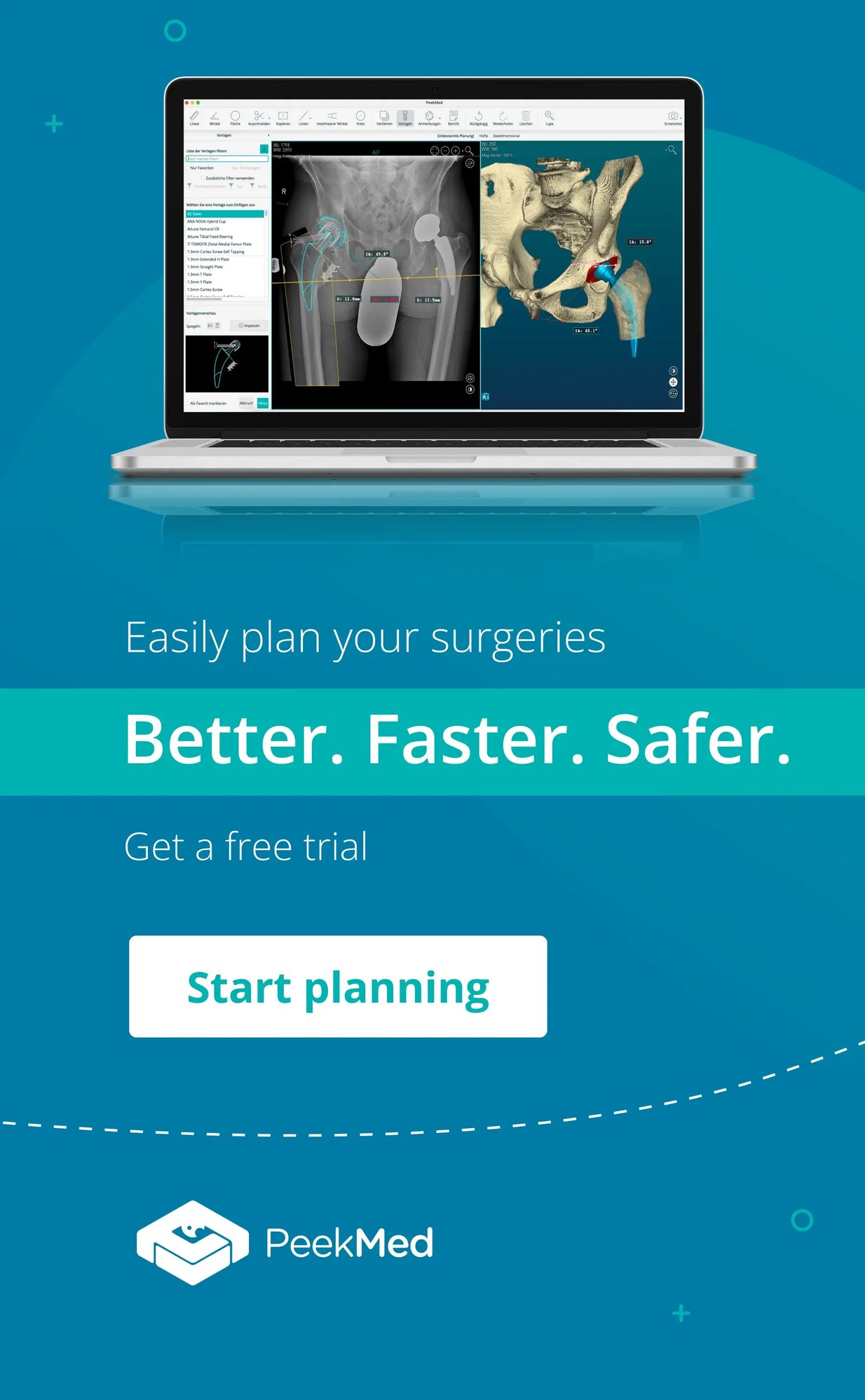PeekMed
Imagine a world where surgeons can hold a patient’s organ in their hands before performing a life-saving operation, where custom implants fit perfectly on the first try. Where prosthetics are not just functional—but life-changing.
Sounds like science fiction? It's happening right now, thanks to 3D printing in medicine. The best part? This technology is only getting better.
In this article, we’ll explore the evolution of medical 3D printing, how it’s transforming surgeries, and why it’s revolutionizing patient care. If you're a surgeon looking to stay ahead of the curve, keep reading.
Table of Contents:
The Evolution of 3D Printing in Medicine
How 3D Printing is Reshaping Medicine
The Future of 3D Printing in Medicine
Why This Matters for You
A Quick Look Back: The Evolution of 3D Printing in Medicine
3D printing—also known as additive manufacturing—started as an industrial tool in the 1980s. But its medical applications soon became clear.
At first, bioprinting was used to create anatomical models to help surgeons visualize procedures. Then came custom implants. Now, bioprinting is making its way into regenerative medicine.
Here’s how we got here:
- 1980s-1990s: Early research on using 3D printing for medical models.
- 2000s: First successful 3D printed prosthetics and implants.
- 2010s: FDA-approved 3D printed implants for surgeries.
- Today: Bioprinting of tissues, surgical planning models, and patient-specific solutions are becoming the norm.
And we’re just scratching the surface.
Game-Changer for Surgeons: How 3D Printing is Reshaping Medicine
If you’re a surgeon, precision is everything. 3D printing takes this to another level.
1. Preoperative Planning: Seeing Before Cutting
Traditional imaging gives a 2D or digital 3D view. But 3D printed models? They allow you to hold a patient’s anatomy in your hands before surgery.
Surgeons can:
- Study complex structures up close.
- Plan incisions with pinpoint accuracy.
- Reduce operating time and complications.
Studies show that using 3D printed models for preoperative planning can improve precision and reduce risks.
2. Personalized Implants and Prosthetics
One-size-fits-all doesn’t work in medicine. With 3D printing, implants and prosthetics are custom-made for each patient. This means:
- Faster recovery times (because the fit is perfect).
- Better functionality for prosthetic limbs.
- Higher success rates in complex reconstructive surgeries.
Take orthopedic surgery, for example, when 3D Printing is commonly used to create personalized implants, devices, and instruments. With tools like PeekMed, surgeons can create precise 3D plans before even entering the OR, reducing guesswork and improving patient outcomes.
3. Bioprinting: The Future of Organ Transplants?
This is where things get really exciting. Scientists are working on 3D-printing human tissue—eventually leading to fully functional organs.
Right now, researchers are printing:
- Skin for burn victims
- Bone structures for reconstruction
- Cartilage for joint repair
The goal? One day, no more organ transplant waiting lists. Patients will get tailor-made organs on demand.
What’s Next? The Future of 3D Printing in Medicine
We’re only at the beginning. Over the next decade, expect:
- More bioprinting breakthroughs. Tissue engineering will expand into more complex structures.
- AI + 3D Printing. Machine learning will help create even better custom implants.
- Regulatory advancements. Governments will refine policies on 3D printed medical devices.
For surgeons, this means faster, safer, and more precise procedures. And for patients? A whole new era of personalized medicine.
Why This Matters for You
3D printing is more than a trend — it’s becoming increasingly prevalent in healthcare every day.
Whether you’re a surgeon looking to improve outcomes or a medical professional exploring cutting-edge tech, now is the time to embrace this change.
Want to stay ahead? Check out PeekMed and see how 3D planning is already transforming orthopedic surgery. The future of medicine is here. Are you ready?
References
-
Synopsys. "What is Medical 3D Printing?" Synopsys, Retrieved from https://www.synopsys.com/glossary/what-is-medical-3d-printing.html
-
European Commission. "Celebrating 40 Years of EU Research and Innovation: Health and 3D Printing." Research and Innovation, Retrieved from https://research-and-innovation.ec.europa.eu/events/special-features/celebrating-40-years-eu-research-and-innovation/health/scan-surgery-3d-printing-models-help-surgeons-better-prepare_en
-
Pew Charitable Trusts. "What is Medical 3D Printing and How is it Regulated?" Pew Trusts, 2020. Retrieved from https://www.pewtrusts.org/en/research-and-analysis/issue-briefs/2020/10/what-is-medical-3d-printing-and-how-is-it-regulated
-
Chia, H.N., Wu, B.M. "Recent Advances in 3D Printing of Biomaterials." NCBI, 2015. Retrieved from https://pmc.ncbi.nlm.nih.gov/articles/PMC8953417/
-
Murphy, S.V., Atala, A. "3D Bioprinting of Tissues and Organs." Nature Biotechnology, 2014. Retrieved from https://pmc.ncbi.nlm.nih.gov/articles/PMC10233802/
-
Shafiee, A., Atala, A. "Printing Technologies for Medical Applications." ScienceDirect, 2023. Retrieved from https://www.sciencedirect.com/science/article/pii/S2214031X22000213
-
Rengier, F., Mehndiratta, A., von Tengg-Kobligk, H., et al. "3D Printing in Medical Applications: A Review of Current Technology and Applications." NCBI, 2010. Retrieved from https://pmc.ncbi.nlm.nih.gov/articles/PMC6115481/



